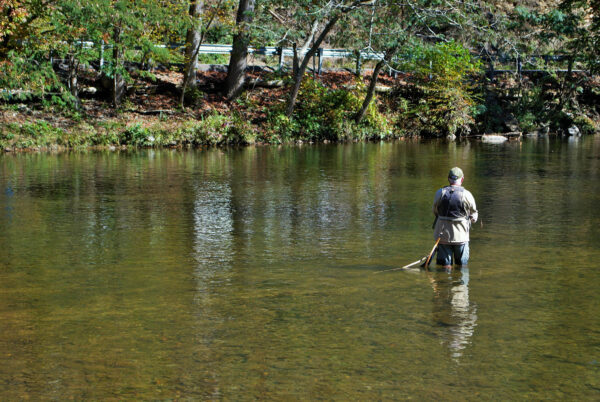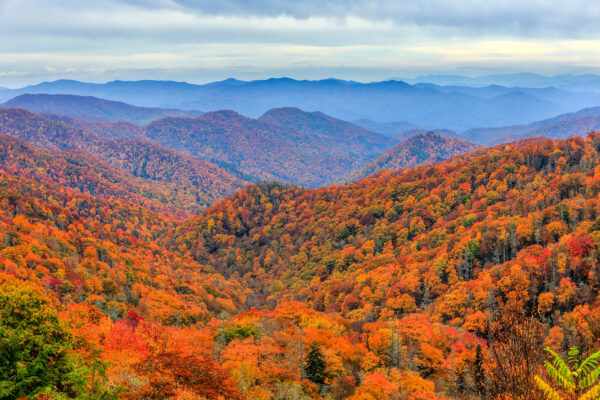Embracing Bird Watching in the Smoky Mountains
Bird watching in the Smoky Mountains presents a unique opportunity to connect with nature and witness the incredible diversity of avian life that thrives in this rich ecosystem. With over 240 species of birds calling the Smokies home throughout the year, enthusiasts can enjoy a variety of birding experiences across the changing seasons. The focus keyword phrase “Bird Watching in the Smoky Mountains” highlights an activity that attracts both seasoned birders and those new to the hobby, offering peaceful moments in nature, the thrill of spotting rare species, and the chance to learn more about the environment and its inhabitants.
The Smoky Mountains’ vast range of elevations and habitats, from dense forests and serene valleys to high mountain peaks, creates unique niches for different bird species. This diversity ensures that any visit, regardless of the season, can be fruitful for bird watchers. Preparing for bird watching in the Smokies involves not just knowledge of the seasons and species but also respect for the park’s guidelines to ensure the protection of wildlife and their habitats.
Spring: A Symphony of Songbirds
Spring in the Smoky Mountains is a magical time for bird watching, as migratory songbirds return and the forests come alive with their melodious calls. This season is ideal for spotting warblers, vireos, and thrushes as they arrive to breed and fill the air with their songs. The blooming wildflowers and budding trees provide a picturesque backdrop for birding adventures, making it a favorite time for photographers as well.
Areas such as Cades Cove and the Roaring Fork Motor Nature Trail are excellent for spring birding, offering accessible paths and a variety of habitats. Early morning is the best time to catch the peak of bird activity when the forest is most alive with song. Bringing a field guide to Eastern birds or using a birding app can help identify the myriad of species you may encounter, from the vibrant Scarlet Tanager to the elusive Wood Thrush.
Summer: Resident Birds and Breeding Season
As summer settles over the Smoky Mountains, the resident bird species, along with those that migrated in spring, are well into their breeding season. This time of year offers a chance to observe nesting behavior and, if you’re lucky, glimpses of fledgling birds learning to fly. The dense foliage can make spotting birds more challenging, but it also provides a lush, green canvas for your observations.
Elevated areas such as Clingmans Dome and the higher reaches of the Appalachian Trail offer cooler temperatures and the opportunity to see species adapted to higher altitudes, like the Northern Saw-whet Owl or the Red Crossbill. In the summer, bird watching requires patience and a keen eye, but the rewards of witnessing the vibrant ecosystem in full swing are unparalleled.
Fall: Migration and Colorful Plumage
Fall marks another exciting season for bird watching in the Smoky Mountains as many species begin their migration southward. This period offers a last chance to see summer residents before they depart and the arrival of some winter species. The changing leaves provide a stunning backdrop for bird watching, with raptors and other migrants seen against the colorful palette of the mountains.
Lookouts and open areas such as Newfound Gap provide strategic points for observing raptor migration. The cooler weather and less dense foliage make spotting birds easier, and the fall migration period is an excellent time for beginners to practice their bird identification skills, with species such as the Broad-winged Hawk and various warblers on the move.
Winter: Rare Sightings and Winter Residents
Winter in the Smoky Mountains may seem quiet, but it offers its own unique bird watching opportunities. This season is perfect for spotting winter residents and occasional rarities that may visit the area. Species such as the Northern Cardinal, Carolina Chickadee, and Red-breasted Nuthatch can be found, adding a splash of color to the winter landscape.
Feeder watching becomes especially rewarding during the colder months, as birds gather at feed sites, providing easy viewing opportunities. The absence of foliage also aids in spotting and identifying birds. Areas around visitor centers and maintained trails can be good starting points for winter birding, offering accessible spots that are frequented by birds.
Maximizing Your Bird Watching Experience
To maximize your bird watching experience in the Smoky Mountains, investing in a good pair of binoculars and a regional bird guidebook is essential. Joining a bird watching group or participating in a guided bird tour can also enhance your experience, providing insights from experienced birders and opportunities to share your passion with others. Recording your sightings in a journal or using a birding app can help track your observations and progress as a birder.
Respecting the environment by staying on designated trails, minimizing noise, and following the principles of Leave No Trace ensures that the bird habitats remain undisturbed and that bird watching in the Smoky Mountains can be enjoyed by future generations. By embracing the seasonal changes and following these tips, bird watchers can enjoy a fulfilling and respectful engagement with the avian world of the Smokies.
In conclusion, bird watching in the Smoky Mountains offers a rich and varied experience throughout the year, providing birders with endless opportunities to observe and appreciate the avian diversity of this magnificent region. Whether you’re drawn to the vibrant songbirds of spring, the lush scenes of summer, the migratory spectacles of fall, or the quiet beauty of winter, the Smokies deliver memorable birding experiences that resonate with the rhythms of nature.
















Share This Page